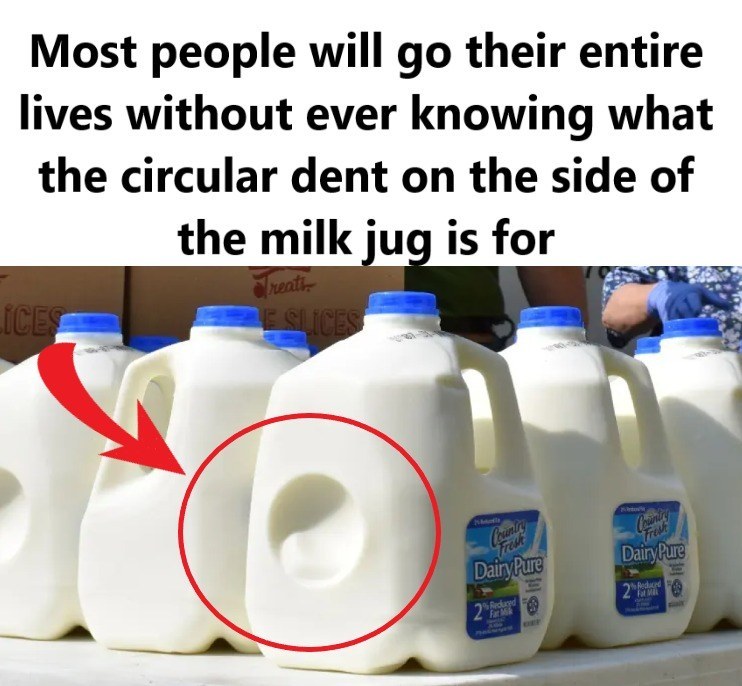When you pick up a gallon of milk at the grocery store or pull one from your fridge, you probably don’t spend a lot of time thinking about its design. But take a closer look at the jug, and you might notice a small, circular dent on the side or the bottom. While it may seem like a meaningless design quirk or just a result of the plastic molding process, that little indentation is anything but random.

In fact, it’s a smart, functional feature built into the jug’s design to serve several important purposes. That unassuming dent is a quiet example of everyday engineering at work—one that plays a big role in making milk jugs more reliable, more efficient, and even better for the environment. So what’s the deal with that dent? First and foremost, it’s designed to help the jug handle pressure changes. Milk containers go through all sorts of temperature shifts—think of the journey from a cold factory to a warm delivery truck and then back into a refrigerator. As temperatures change, the liquid and gases inside the jug expand and contract.
Without room to flex, the jug might bulge, crack, or even leak. But that little dent? It works like a pressure relief valve. When the internal pressure changes, the indentation can flex inward or outward slightly to absorb the difference. It’s kind of like the jug is breathing with its environment, keeping everything inside stable. That’s not the only thing it does. If you’ve ever accidentally dropped a gallon of milk, you know what a mess it can be. That same dent helps act as a shock absorber when the jug hits the floor. The structure is designed to give just enough to take the brunt of the impact, reducing the chance of the jug splitting open or spilling. It’s a simple but effective way to make milk containers more durable, and that matters when you consider how often these jugs get moved, dropped, or jostled in everyday life—from the production line to store shelves to your kitchen counter.
Beyond just protecting your kitchen floor from a milky mess, the dent also plays a role in how environmentally friendly and cost-effective the jug is. Because of its shape and ability to handle pressure, manufacturers don’t have to use as much plastic to make each jug strong. That might not seem like a big deal, but when you’re producing millions of jugs a year, reducing the plastic content even a little can lead to major savings in materials and a noticeable reduction in environmental impact.
Less plastic means lighter containers, which also reduces shipping costs and fuel consumption when transporting milk from dairies to stores. That’s a win for manufacturers, retailers, and the planet. The dent also comes in handy during the jug’s production process. In the blow molding technique used to form these plastic containers, the indentation acts as a structural guide that helps the plastic shape evenly and consistently. This results in fewer manufacturing defects, better stacking during shipping and storage, and a more consistent product for consumers. Retailers benefit, too, since the shape allows for better stacking and storage in tight spaces, whether in a refrigerator case or a stockroom. And when it comes time to recycle that empty jug, the dent continues to prove useful. Because it supports the structural integrity of the jug and helps keep its shape, recycling facilities have an easier time sorting and processing the containers, ensuring they’re properly repurposed into new plastic products. All of these benefits come from a feature you might not have even noticed, which goes to show that some of the most impactful innovations in product design aren’t flashy or obvious. They’re subtle, smart, and integrated so seamlessly into our lives that we barely realize they’re there. The next time you grab a jug of milk, take a moment to appreciate that little dent. It might seem insignificant, but it’s actually doing a lot of work—helping to keep your milk fresh, your kitchen clean, and the environment just a little greener, all without you ever having to think about it.





